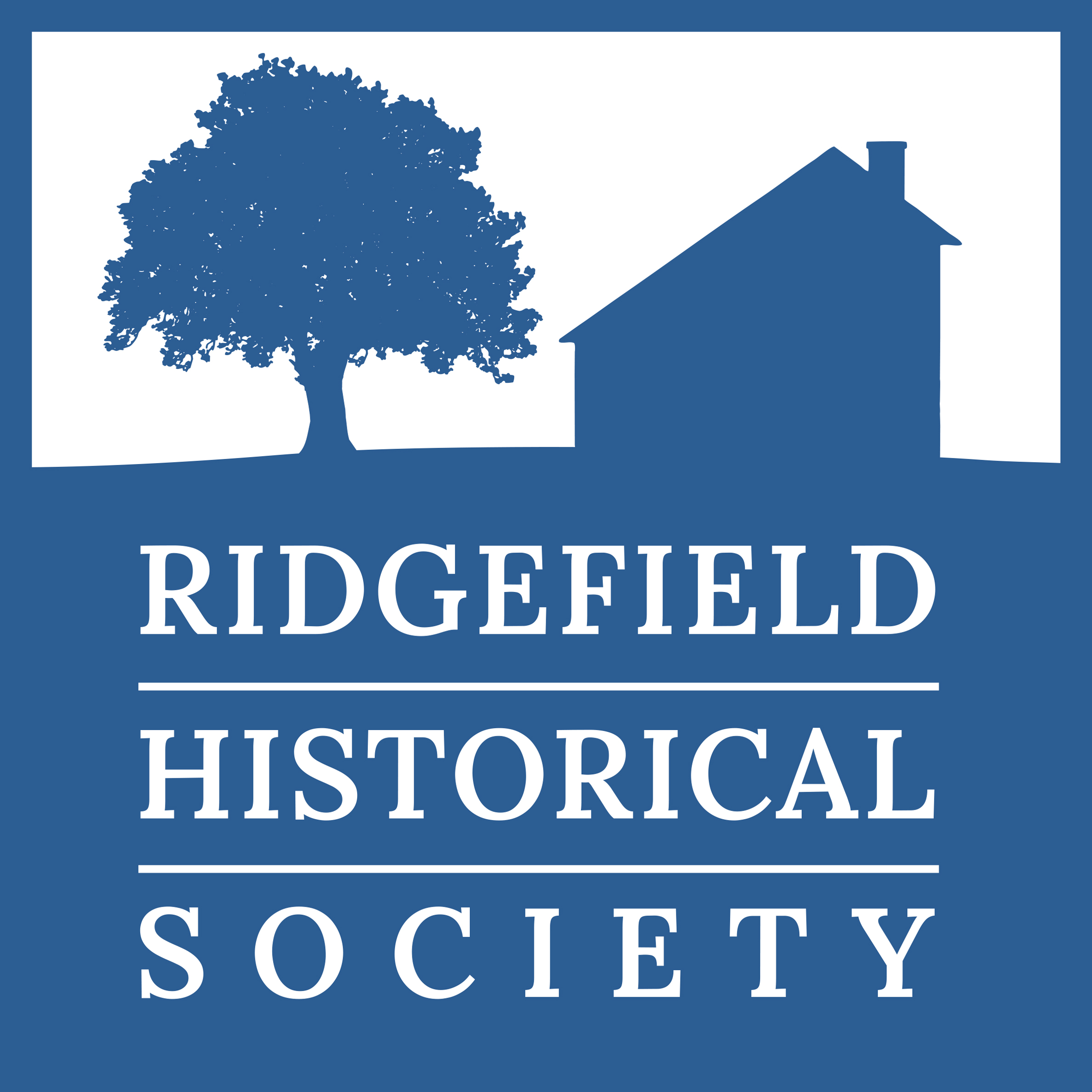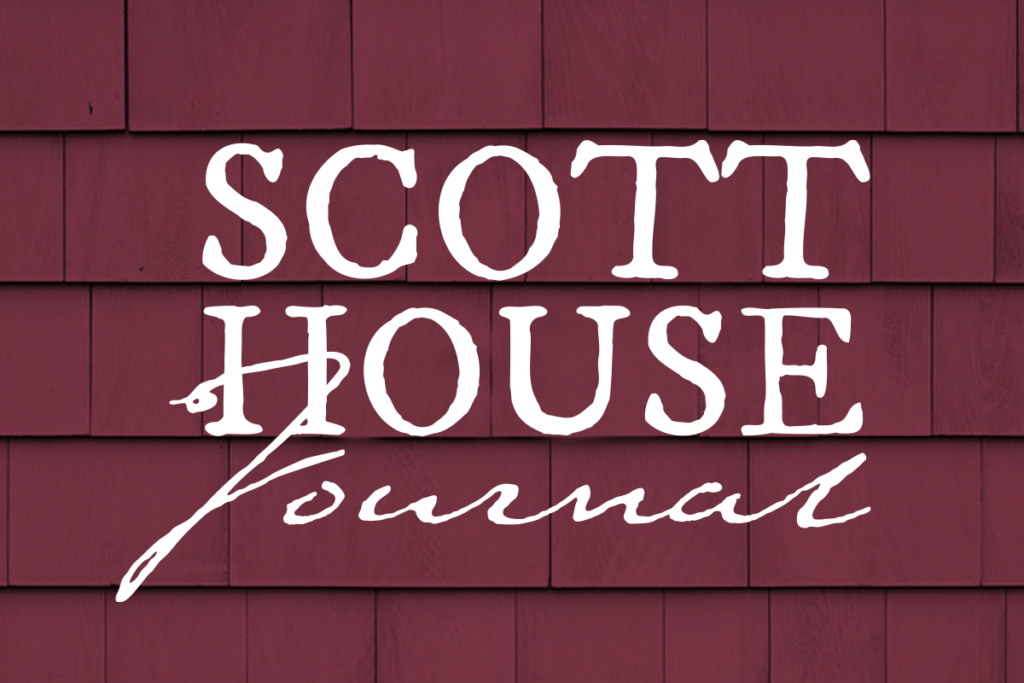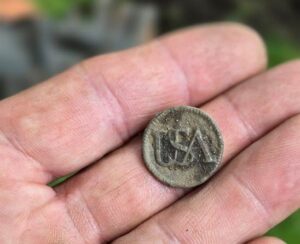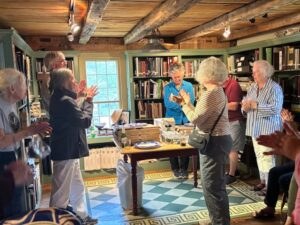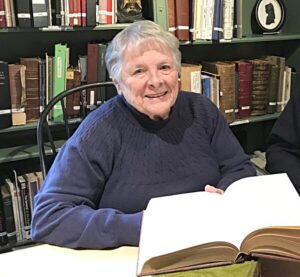Download PDF
The Clarence F. Korker Collection:Pictures worth thousands of words
Clarence F. Korker, born in 1925, came to Ridgefield as a young man, just in time to see the amazing changes as the town’s population quadrupled between 1950 and 1970 – from 4,356 to 18,188.
At 100, “Korky” has a unique perspective of the town as the photographer who shot weddings, created portraits, snapped passport photos and did commercial photography for all sorts of organizations, businesses and industries. He had a hand in creating a popular radio show, set at the Stonehenge Inn, where host Victor Gilbert interviewed visiting celebrities. Korky, of course, was photographing the events, and stars like Judy Garland and Elizabeth Taylor.

A New Canaan native, Korky and his family experienced the financial challenges of the Great Depression, moving several times before settling with relatives in Westport, where he attended high school. He left in 1943 to join the U.S. Navy and was assigned to the U.S. Navy Armed Guard, which manned the guns on Merchant Marine ships. Headquarters, with about 5,000 men, was in Brooklyn, and it was there that Korky embarked on what would be a lifelong career.
In an oral history interview with the Ridgefield Historical Society shortly after his 100th birthday, he explained that his philosophy in life has always been to answer “Yes!” to requests. He learned that in the Navy. “I never said no,” he said.
When he heard an officer talking about creating a photo studio on base, Korky stepped up (with an early interest in photography that he’d developed back in Westport) and at 18 years old, he managed the creation and stocking of the studio and became its first photographer. He photographed visiting dignitaries and celebrities and was on the staff of The Pointer, a bi-weekly newsletter for the base and the Armed Guard at sea.
Leaving the service in 1945, he came back to Connecticut and opened a small photography business in Danbury, where he was the photographer for the Great Danbury State Fair. Even with his youth and entrepreneurial spirit, he found competing with three established photographers in Danbury to be too much to overcome, so after a year, he closed the Danbury enterprise.
After a year working in Texas, he was back in Connecticut, and in 1946 met Geraldine Hansen in New Milford, where he found work and kept up his photography skills while looking for his next opportunity. Korky and Gerry married in 1949. With the support of her family, the young couple bought the Ridgefield Photo Shop on Main Street in 1951 from Frank Gordon.
The Korkers soon established themselves in the community, building up a thriving operation with Korky doing all the photography and Gerry handling the finances and bookkeeping. The shop moved from its original location at 127 Main Street to a new store, just south of what was then Craig’s Jewelry Store.
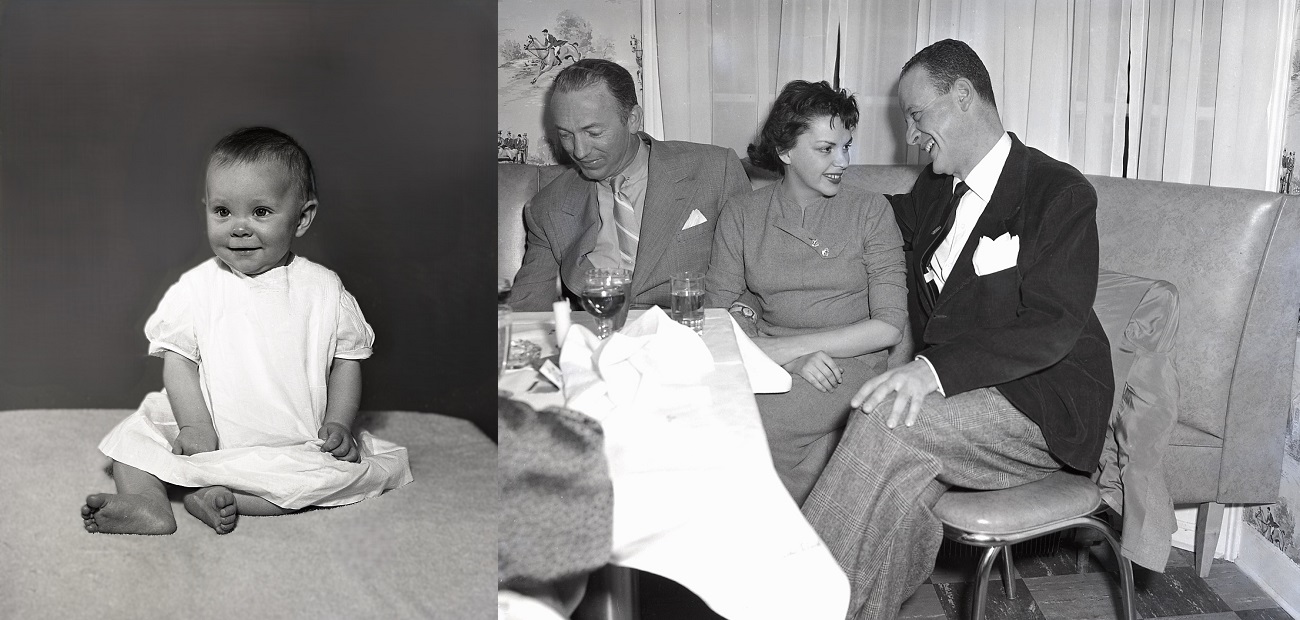
RIGHT: Korky photographed many celebrities as part of the team at Stonehenge for Victor Gilbert’s Sunday radio show in the 1950s. However, this photo was taken at the Elms Inn, with, from left, Sid Luft, Judy Garland, and Mr. Gilbert (whose title at Stonehenge was “Skinker”, an Old English term for host).
Meanwhile, the Korkers bought land on Silver Birch Lane and built the house where they’d live until they retired and moved fulltime to Florida (and “I mean we built our house,” Korky said in his oral history. He and Gerry did much of the work, guided by her father who had expertise in construction.) The Ridgefield Photo Shop continued to grow, its reputation for the highest quality of work bringing in portrait and commercial clients as well as social event assignments. There was a steady stream of amateur photographers who brought in their rolls of film to be developed and printed. Over the years, the Korkers met and served many celebrity clients, from opera singer and silent film star Geraldine Farrar (coincidentally, Gerry Korker was named for her), to comedian Imogene Coca to actors George C. Scott and Colleen Dewhurst. The Gabor sisters, Cyril Ritchard, Cornelius Ryan, Mary Travers, and Robert Vaughn were also among the shop’s patrons. As his business flourished, the need for more space was pressing. When the Jesse Lee Methodist congregation moved from the corner of Main and Catoonah streets, there was an opportunity to expand and keep a Main Street location. Korky had a handshake deal to buy the church building and the parsonage and he worked with several other local businesses to turn plans he’d had drawn (“a Colonial Williamsburg building – it was beautiful”) into reality. When one of the major participants withdrew, and the church building was found to be structurally unsuited for repurposing, Korky found a way to move forward, with the participation of Morganti Construction, which took on the project. While the exterior of the brick building was not what he’d envisioned, the Ridgefield Photo Shop that opened there and the photo lab in the building basement were perfect for the continued growth of his business. “Kodak designed the interior,” Korky explained, and he sourced all the counters and cases from Hunt Country Furniture in Dover, N.Y., with wide pine planks making up the countertops. He had done considerable photography work for the company over the years. “We had a beautiful store,” he said.
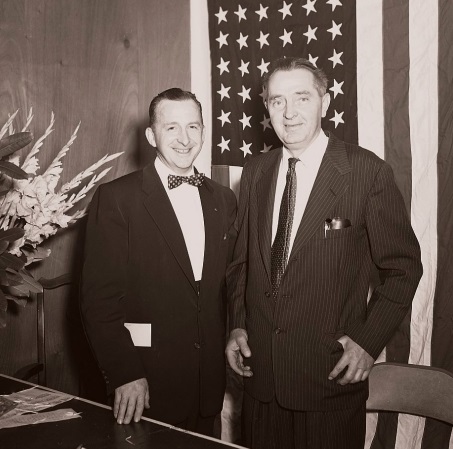
The photo laboratory in the basement had everything Korky needed, with plenty of storage for the specialty materials he required to do the high caliber processing that was his trademark. Kodak designed this space as well, for black-and-white and color photo work.
From just the two of them, Korky and Gerry Korker grew their business to a staff of 10. They sold cameras, frames, did custom framing work and more. When they decided to retire in 1991 after 40 years in the business, Kodak representatives helped find the right successor to carry on the business, George Harrison of Wilton, who owned a photo shop there. The Ridgefield Photo Shop closed in 2007, as the digital photo age took over. The Korkers’ son Paul, also a professional photographer, had taken over the portrait business, with a studio of his own on Barry Avenue.
Korky and Gerry had owned a home in Fellsmere,Fla., for many years, having been introduced to thesmall town in Indian River County by Gerry’s parents,Enoch and Mina Hansen, who originally spent winters there. After selling their business, the Korkers moved to Fellsmere, where both were active in civic affairs.Naturally, a darkroom was part of their home.So when a trove of glass lantern slides were shown to him by the superintendent of the Fellsmere Water Control District, Korky was able to reproduce the images and provide copies to the Indian River County Main Library Archive Center and the Indian River County Historical Society. These photographs of the early days of Fellsmere are now preserved in the Clarence F. Korker Collection at the Archive Center.
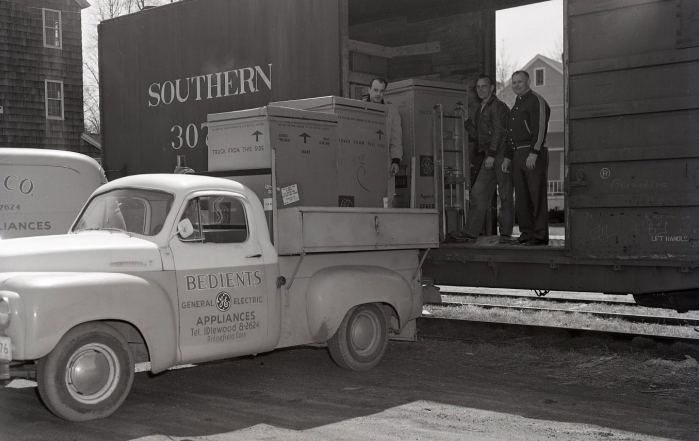
The Ridgefield Historical Society was honored to receive the vast collection of negatives from Korky’s 40 years of work in Ridgefield and to now have its own Clarence F. Korker Collection. Thousands of these images are now viewable on the Ridgefield Historical Society website and there are many thousands more awaiting scanning and digital clean-up that will be added to the online files. This treasure trove of images of the second half of the 20th Century in Ridgefield are a great gift to the understanding of an important period in the town’s history. We invite you to spend time with them and please send ID’s of people and places that have only minimal information: email [email protected] with the photo name (e.g., img703.tif and the file name).
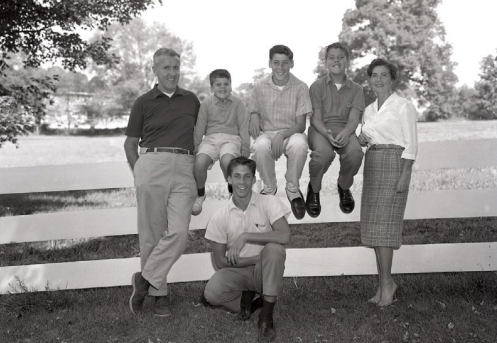
Explore the Korker Collection as it grows online
by Keith Russell
(Keith Russell, longtime volunteer and Ridgefield Historical Society Board Member, has been working with the Korker Collection since 2023, cleaning and digitizing the negatives in this remarkable archive. Even more remarkable is the ability to video-chat with the 100-year-old photographer, who’s been providing insights into the images from his long career.)
The Collection
by Keith Russell
Clarence “Korky” Korker is a photographer who, along with his wife Geraldine, purchased the Ridgefield Photo Shop in 1951. The Shop was in operation until 1991, and along the way Korky recorded the goings-on in Ridgefield through his camera lens. If it was happening in Ridgefield, Korky photographed it, which included weddings, passport photos, portraits, high school yearbook photos, buildings, events, and much more.
A photographic history of Ridgefield over a 40 year period, the collection of his negatives was donated to the Ridgefield Historical Society in 2007, where it was stored until 2023.
Restoration
In 2023 the computer system at the Historical Society enjoyed a major upgrade through a generous grant from the Ridgefield Thrift Shop. Along with new computers, several new scanners were purchased, which included an Epson 850V Pro scanner, for the purpose of high resolution scanning and digitizing black and white and color photo negatives. In August of 2023 scanning and digitizing the Korker Collection began. With the help of AI technology, the negatives have been restored, and beautiful high resolution digital photos of the collection have now become available on the Ridgefield Historical Society’s website.
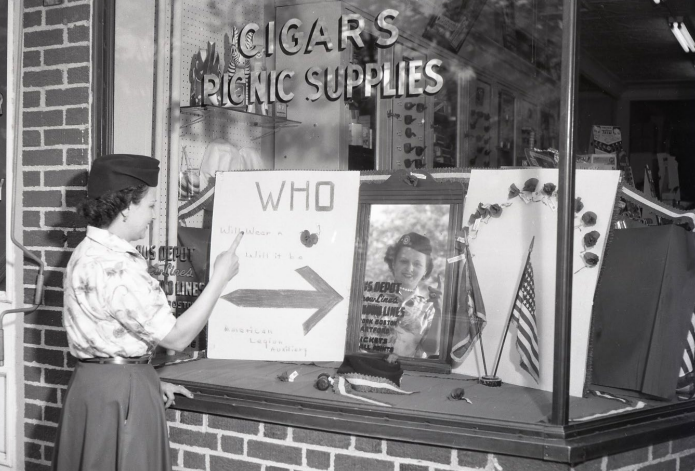
With the help of the new technology, the meticulous restoration of the negatives takes on average eight to ten minutes per negative. To date, we have scanned roughly 2600 negatives! More negatives are scanned and uploaded to the website weekly.
Scope of the Collection
The Collection’s negatives are kept in shoe-box size, specially designed storage boxes, with each negative now in a protective sleeve. They are stored in the climate-controlled vault beneath the Historical Society’s Scott House headquarters at 4 Sunset Lane. The 35 storage boxes each contain 800-900 photo negatives for a total of 30,000 to 35,000 negatives. We have only scratched the surface of the valuable history contained in this collection.
The Historical Society’s Web Site and Korker Collection Info
To view the ever growing collection of images from the Korker Collection, go to Ridgefieldhistoricalsociety. org > Collections> Our Collections> scroll down to “search the Korker Collection here” > click on the “click here to view photos” link. The Folders are listed in alphabetical order by last name, what the folder contains (wedding, portrait, etc), and the year. In many cases, we just have a last name and the year. (Please send more detailed identifications to [email protected] or [email protected].) Take a look, search, enjoy. You never know what pictures you might find! See our website for information on ordering high-resolution images.
The Scott House Journal (SHJ) is a quarterly publication, sharing stories of Ridgefield past. It is written by Sally Sanders, Historical Society Board member and former arts editor
